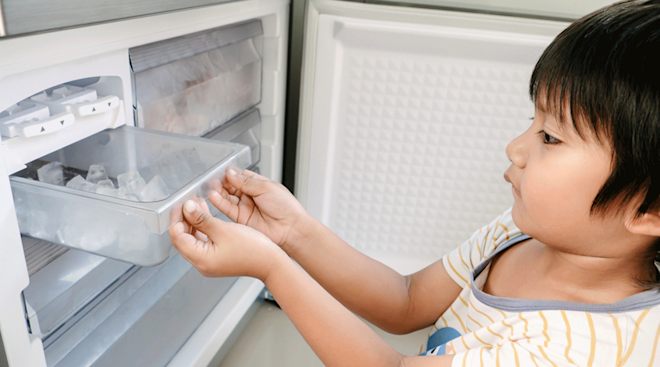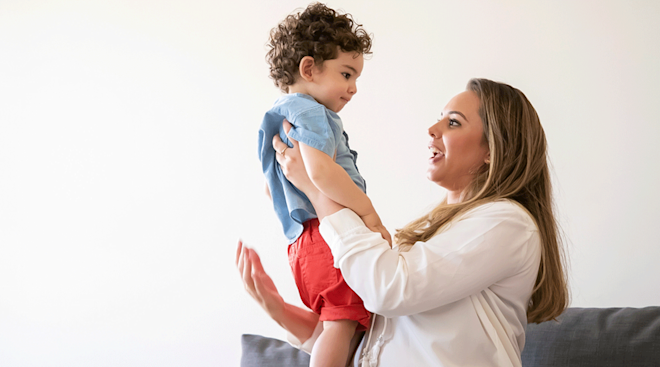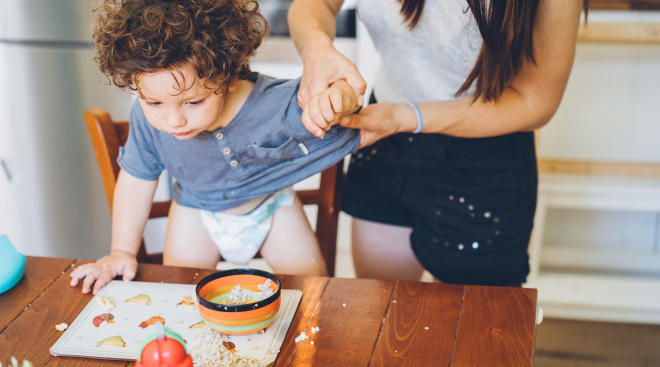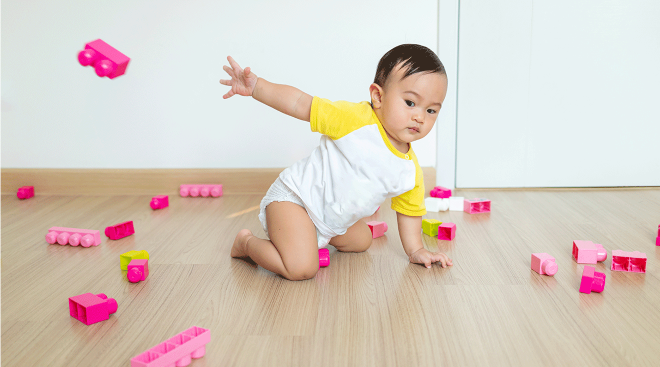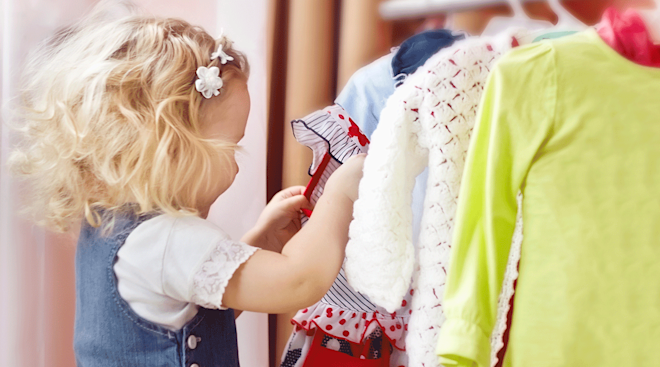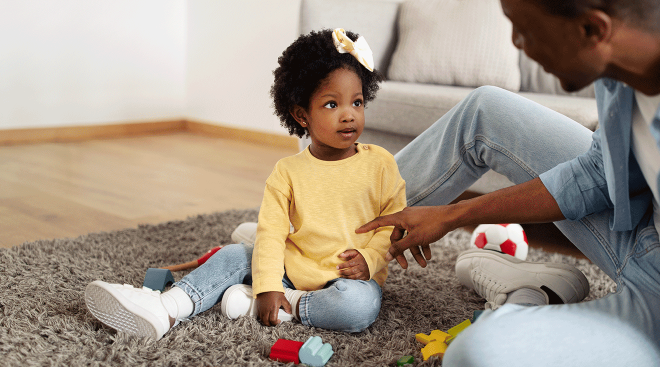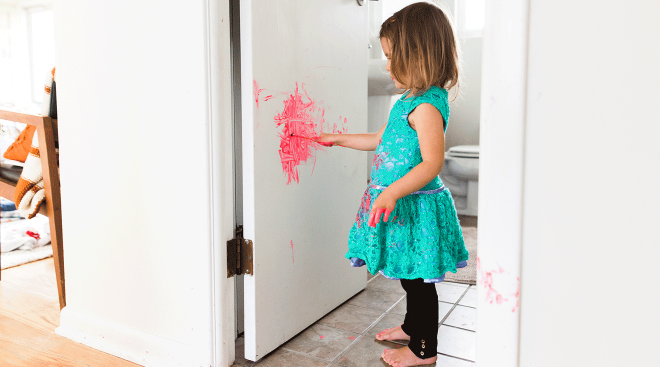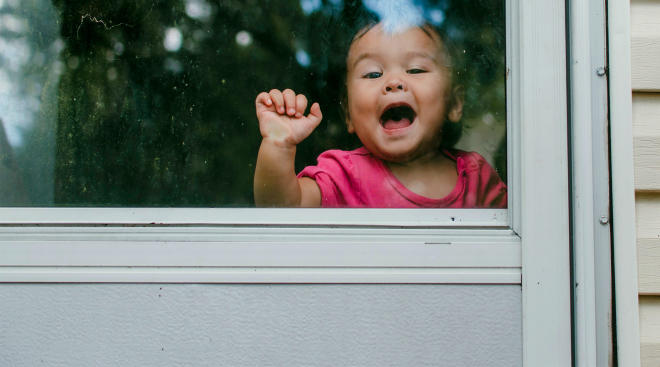5 Things to Do When Your Toddler Says 'No'
Why is it that every toddler learns to say “no” before they even say their own name? While they can barely pronounce something like “car” above a whisper, they can scream “no” in a perfectly pronounced and annunciated manner in the middle of a crowded store. Every toddler begins to learn “no” as a part of developing their own independence and personality around the age of 2. It’s actually a good thing as they are learning to develop their own free will and beginning to realize that their desires aren’t always the same as their parents. But try explaining that to a parent with a toddler in full meltdown mode in a public place.
For the first two years of a child’s life, they are pretty compliant. Sure, they throw the occasional tantrum and have meltdowns, but these are fairly easy to anticipate and head off. Food, sleep, messy diapers and boredom are the usual suspects. But after they can start voicing their own opinions and disagreeing, and they’re even mobile enough to attempt to run away from you. Once they learn “no,” there’s no going back.
My twin boys, about to turn 2, just learned the word “no” recently and it’s now their favorite word. It’s hard to get mad at them for using it, especially because they draw it out into an adorable meow-like “nnnnnnnnnneeeeeeeeeeeoooooo.” This accompanies bedtime, mealtime and generally anytime we want them to do something they don’t want to do. “Do you want some chicken?” “No.” “Are you ready for bed?” “No.” “Let’s go clean up the toys.” “No.” It gets old quickly. But with the two of them constantly spouting it, I had to quickly learn countermeasures and how to avoid it in the first place.
At first, I thought I’d never be the parent begging and pleading with their child in a grocery store or other public place. When stubbornness began, I tried pleading, but restating what it was I wanted only succeeded in getting them to dig in further and fight back stronger. Falling back to yelling didn’t work either as the higher energy just caused them to ramp up their efforts to fight. Begging them to just do what I wanted didn’t sink in and they would just keep on going. Instead, I realized I would have to outsmart them and be prepared, much like the entire experience of parenting so far. Here are my five to-go moves when my toddlers start in with the “no’s.”
Many times, toddlers fight back because they see your instructions as a binary choice with only two options. The option parents present is the only one given, so the exact opposite becomes the other, default choice. By presenting two choices, parents can head off this false duality and put forward two choices of options they want. For example, instead of telling a child it’s time to leave a playground, ask if they want to leave now, or spend five more minutes playing and then leave. Sometimes, they might even make the choice to leave immediately. Giving them this choice makes them feel they do have some power over the situation, changing the normal dynamic where they get frustrated because nothing is under their control.
Another tactic is to be very clear about what is expected, and when. Don’t tell a child they need to go to bed now. Tell them that in five minutes they need to put away their toys, get changed, read two books, and then go to bed. While this large number of things may be hard for them to remember, at least they know what they need to do next. It’s also important to include something rewarding in the mix—in this case, reading together. Making sure there is something to look forward to reduces the risk of frustration with having to stop doing something they are enjoying.
When the opportunity arises, parents should also be willing to take a time-out when children begin disagreeing. Sometimes, kids just need a moment to cool down and stop reacting. Other times, the fight just isn’t worth fighting. Of course, this approach doesn’t work in public situations or when there is an urgent safety or health concern. For times at home though, this brief time-out not only gives the child a chance to calm down and be more receptive, but also gives the parents the opportunity to take a pause and make sure they are reacting the way they want to.
All parents learn early on that distractions are also a great way to ensure a moment of calm. Distractions are great ways to avert the “no” too. Just like cats, kids love shiny things, so parents should use any tools they have in their arsenal. Bring along favorite toys, books and siblings to offer up when times get tough. Dangling something shiny or jingly might just be enough to get their attention long enough to prevent the eternal string of “no”s.
Lastly, parents can attempt to minimize the use of “no” and discourage it by preventing their own usage of it, especially to children. Kids absorb things like sponges, especially their parents’ vocabulary. Telling them “no” when they want something only teaches them that saying it is acceptable. Instead of saying “no” the next time they smack the dog, tell them, “We pet the dog gently and give him hugs.” Instead of telling them “no” when they start flinging cereal across the kitchen like an MLB pitcher, ask them if they want to be done now. Phrasing this direction positively and giving them a choice lets them know what they are doing isn’t right, but also lets them see another option instead of just shutting down. They need to be told what is and isn’t acceptable behavior, but giving choices and positive direction is just as effective as saying no, and has the benefit of teaching them not to default to it either.
A major reason why the “terrible twos” are so terrible is that children begin to find their own independence and opinions. This is good in the long term, since they need to establish and refine this in order to become healthy functioning adults. But the road to raising a functional adult can be quite difficult for parents. As soon as children learn that they have different opinions and desires from their parents and that they can disagree, these disagreements happen often. Stay one step ahead by anticipating what prompts a string of “no”s and using the right tactics.
Tyler Lund is the founder and lead contributor to Dad on the Run. Tyler is a software development manager, tech nerd, home-brewer, 3-time marathoner and rescue dog owner. Tyler loves traveling to new and unique places a bit off the beaten path and sharing stories from these adventures. A foodie with a taste for the unique, Tyler enjoys trying anything new.
Please note: The Bump and the materials and information it contains are not intended to, and do not constitute, medical or other health advice or diagnosis and should not be used as such. You should always consult with a qualified physician or health professional about your specific circumstances.
Navigate forward to interact with the calendar and select a date. Press the question mark key to get the keyboard shortcuts for changing dates.





































